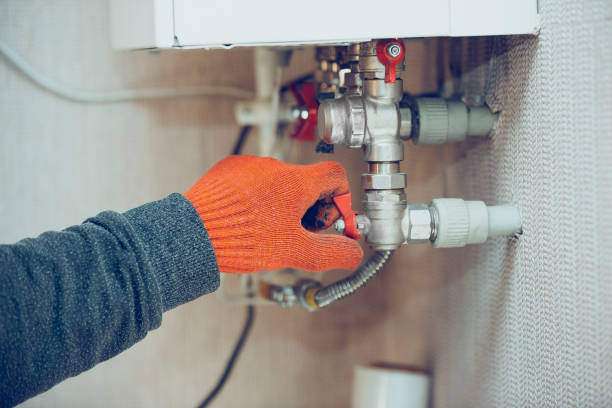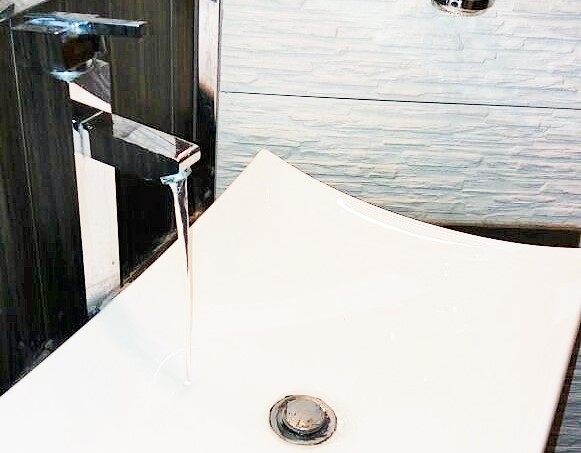In this article underneath you can discover more great content pertaining to 9 Reasons for Low Water Pressure in Your House.

Low water pressure in your home can be a frustrating trouble, affecting every little thing from bathing to washing recipes. If you're experiencing weak water circulation, there are a number of possible causes and remedies to explore. In this guide, we'll talk about usual reasons for low water pressure and useful steps to deal with the issue properly.
Intro to Low Water Stress
Low tide stress takes place when the flow of water from your taps, showers, and various other components is weak than usual. This can make day-to-day jobs a lot more challenging and much less reliable. Comprehending the root causes of low water pressure is vital to discovering the ideal solution.
Common Reasons For Low Water Stress
Pipeline Obstructions
Gradually, pipelines can come to be clogged with natural resource, sediment, or particles, limiting the flow of water. This is an usual problem in older homes with galvanized steel pipes.
Deterioration
Corrosion within pipes can bring about leakages and decreased water stress. Rust build-up can constrict water flow, especially in aging plumbing systems.
Faulty Pressure Regulatory Authorities
Stress regulatory authorities are accountable for maintaining consistent water pressure in your home. If they malfunction, it can result in low tide stress or unequal circulation throughout your home.
Municipal Supply Of Water Issues
Occasionally, the issue lies outside your home. Metropolitan water system concerns, such as main line leakages or maintenance work, can temporarily lower water stress in your area.
How to Diagnose Low Water Stress
Examining Taps and Components
Begin by examining the water stress at different faucets and components throughout your home. If the concern is isolated to details areas, it may suggest local issues.
Inspecting Pipes
Evaluate visible pipes for indications of leakages, deterioration, or blockages. Take note of any type of uncommon sounds, such as knocking or rattling pipes, which could indicate issues within the plumbing system.
Consulting with a Plumber
If you're not able to determine the reason for low water stress, take into consideration working with an expert plumber to conduct a thorough examination. They can identify underlying concerns and suggest ideal solutions.
DIY Solutions to Repair Low Water Stress
Cleaning Aerators and Showerheads
Mineral deposits can build up in aerators and showerheads, decreasing water circulation. Eliminate and clean up these parts on a regular basis to enhance water pressure.
Flushing Hot Water Heater
Debris build-up in the hot water heater can limit circulation and lower effectiveness. Flushing the tank periodically aids eliminate debris and preserve ideal efficiency.
Examining Pressure Regulator
Ensure that the pressure regulatory authority is working appropriately. Readjusting or changing the regulatory authority can help restore proper water pressure throughout your home.
Clearing Clogs in Pipeline
For minor blockages, try making use of a plumbing snake or chemical drainpipe cleaner to clear blockages in pipelines. Be cautious when utilizing chemicals and adhere to safety and security guidelines.
When to Call an Expert Plumber
If DIY initiatives fall short to settle the issue or if you presume significant plumbing troubles, it's best to look for support from a licensed plumber. They have the know-how and tools to address complicated problems safely and efficiently.
Preventive Measures to Maintain Water Pressure
Regular Maintenance
Arrange routine upkeep for your plumbing system to stop issues such as corrosion, leaks, and blockages. Addressing minor troubles early can assist stay clear of more substantial fixings in the future.
Setting Up a Stress Booster
Think about mounting a pressure booster pump to enhance water pressure in locations with continually reduced flow. This can be especially valuable for multi-story homes or properties with high-demand components.
Surveillance Water Use
Be mindful of water use practices and stay clear of ill-using the plumbing system. Easy changes, such as staggering showers and washing loads, can aid keep adequate water pressure.
Final thought
Dealing with low tide pressure can be irritating, however identifying the underlying causes and carrying out appropriate options can recover optimal flow throughout your home. Whether it's cleaning up aerators, examining pipelines, or talking to a plumber, taking aggressive steps can guarantee a constant supply of water for your everyday demands.
FOUR WAYS TO FIX LOW WATER PRESSURE NOW
Turning on a shower or faucet only to find the water comes out in a sad, slow drizzle is never a good feeling. How exactly are you supposed to wash a pan or take a quick shower when it takes 10 minutes just to rinse off a little soap? The good news is that when your water pressure is bad, there's always a cause: typically one that can be easily fixed. Here are some of the most common causes of low pressure and what you can do to fix the issue:
DEBRIS AND MINERAL DEPOSIT BUILDUPS
If you notice low water pressure from just one or two of the fixtures in your house, the problem likely has to do with debris buildup. Water is full of minerals and other debris, all of which can accumulate in your pipes and on your fixtures. This can cause a blockage that affects how much water flows through. To fix this, try filling a small plastic bag with white vinegar, and use a rubber band to hang it around your showerhead or faucet. Let the head of the fixture soak for a few hours, and the vinegar should loosen the deposits.
WATER LEAKS
Leaks are another common cause of low water pressure. If water is flowing out of your plumbing through a hole or crack before it can reach your fixture, the pressure coming out of the faucet or showerhead will be lower. A plumbing professional is your best bet for finding and repairing a leak in your water supply pipes.
Leaks are another common cause of low water pressure. If water is flowing out of your plumbing through a hole or crack before it can reach your fixture, the pressure coming out of the faucet or showerhead will be lower. A plumbing professional is your best bet for finding and repairing a leak in your water supply pipes.
FOUR WAYS TO FIX LOW WATER PRESSURE NOW
Turning on a shower or faucet only to find the water comes out in a sad, slow drizzle is never a good feeling. How exactly are you supposed to wash a pan or take a quick shower when it takes 10 minutes just to rinse off a little soap? The good news is that when your water pressure is bad, there's always a cause: typically one that can be easily fixed. Here are some of the most common causes of low pressure and what you can do to fix the issue:
DEBRIS AND MINERAL DEPOSIT BUILDUPS
If you notice low water pressure from just one or two of the fixtures in your house, the problem likely has to do with debris buildup. Water is full of minerals and other debris, all of which can accumulate in your pipes and on your fixtures. This can cause a blockage that affects how much water flows through. To fix this, try filling a small plastic bag with white vinegar, and use a rubber band to hang it around your showerhead or faucet. Let the head of the fixture soak for a few hours, and the vinegar should loosen the deposits.
WATER LEAKS
Leaks are another common cause of low water pressure. If water is flowing out of your plumbing through a hole or crack before it can reach your fixture, the pressure coming out of the faucet or showerhead will be lower. A plumbing professional is your best bet for finding and repairing a leak in your water supply pipes.
Leaks are another common cause of low water pressure. If water is flowing out of your plumbing through a hole or crack before it can reach your fixture, the pressure coming out of the faucet or showerhead will be lower. A plumbing professional is your best bet for finding and repairing a leak in your water supply pipes.
A VALVE ISSUE
If you have low water pressure throughout your home, check your main shut-off valve to make sure it's completely open. You may also want to see if there's a pressure-reducing valve installed. If there is, have a plumber help you adjust the settings to get the pressure you're looking for.
OTHERS USING WATER
Believe it or not, your low water pressure could be caused by your neighbors. If you notice low pressure at certain times of day, it may be because you and the people living next to you have similar schedules - when everyone is showering at the same time, the pressure will be lower in every home. Low pressure throughout the neighborhood may also be caused by an issue with your municipal water supply. If that's the case, call the supplier to see if they're working on the issue.
https://www.rotorooter.com/blog/water-leaking/low-water-pressure-fixes/

I was shown that editorial on from someone on a different site. Sharing is good. Who knows, you could be doing someone a favor. Thanks a lot for going through it.
Book My Estimate